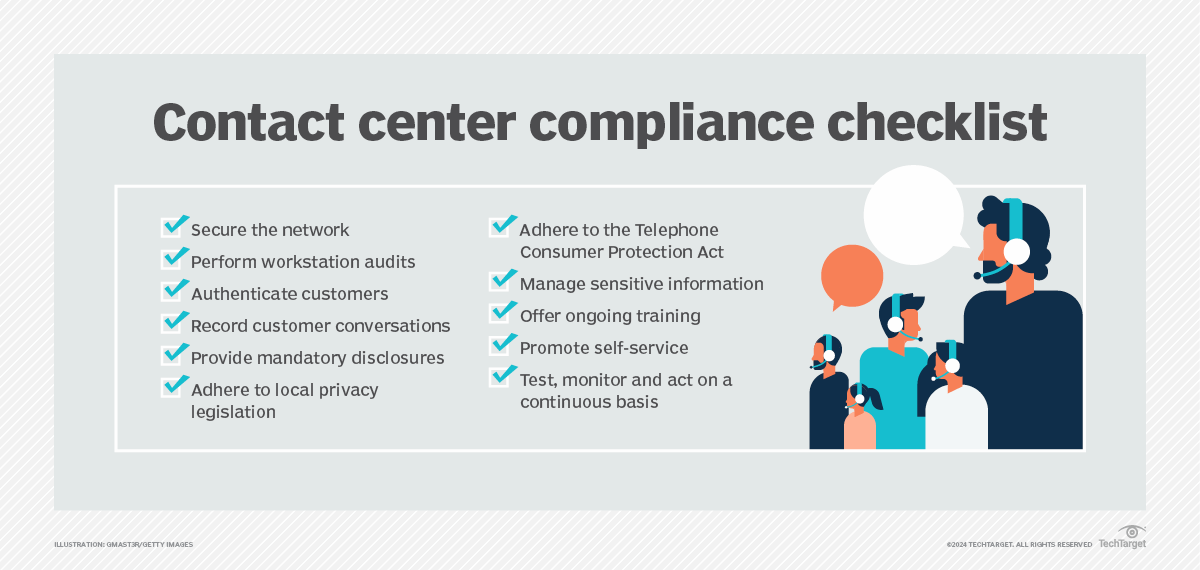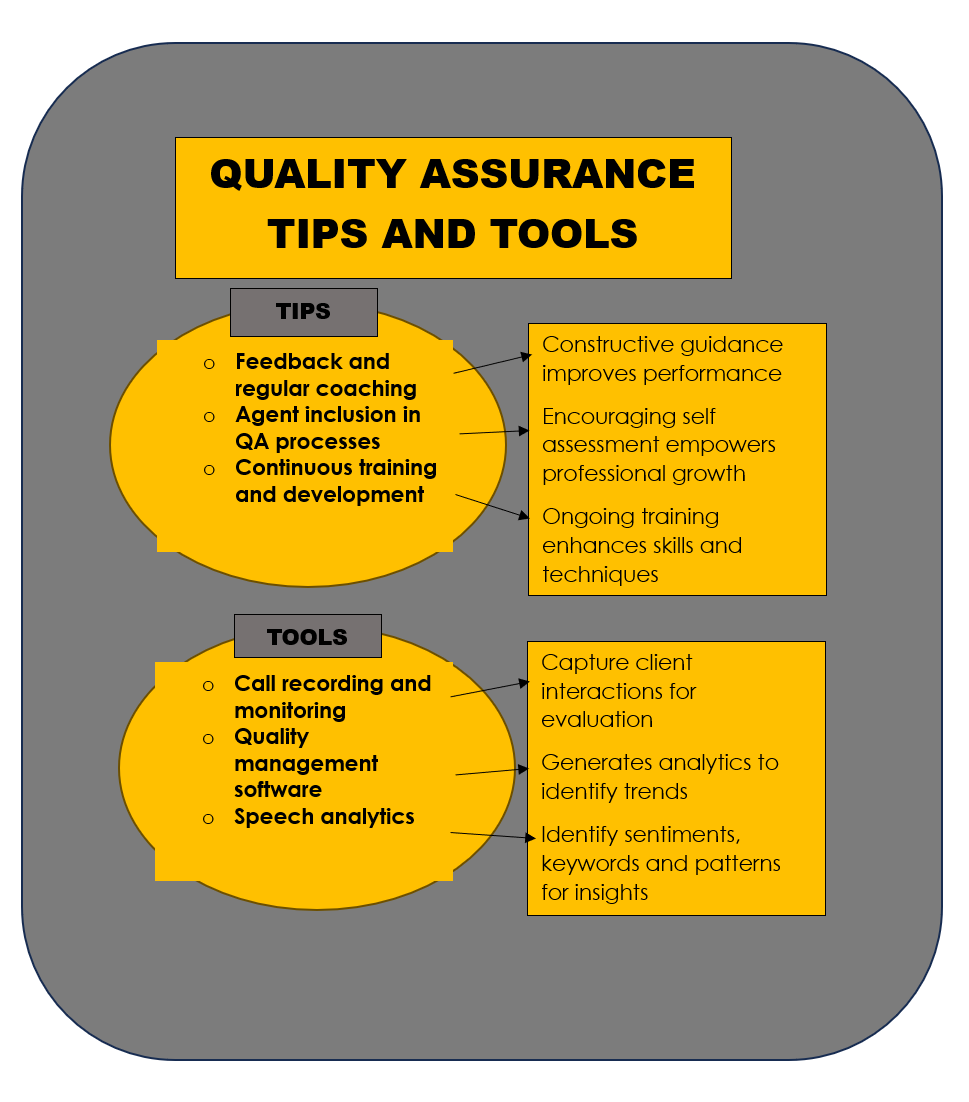Changes in the global working environment where remote teams are now the norm, requires new behavior and management strategies from both employees and managers.
This is particularly true when it comes to the management, supervision, support and monitoring of remote call centers.
Remote call centers, or virtual call centers, are rapidly increasing in popularity, enabling businesses to leverage the cost-savings and flexibility of remote working arrangements. With a remote call center team at the helm of an organization, businesses have access to a wider variety of talent. This creates more opportunities to recruit the best remote agents from diverse locations, who are able to deliver 24/7 customer support.
The size of the (US) call center analytics market is growing rapidly and is expected to continue to expand at an annual growth rate of 19.3% (CAGR) up to 2030.

But managing a remote call center while ensuring customer satisfaction can be challenging. It calls for additional precautions and methods to measure call center performance - and this requires more data to identify productivity gaps and highlight more training opportunities.
In this guide, we'll cover the essentials required to effectively manage a remote contact center team, including what's required of call center supervisors and remote workers. We'll discuss the best strategies for achieving customer satisfaction, and how to monitor performance in a virtual environment.
What is a remote call center?
Let's start by defining the remote call center.
A remote call center is a customer service operation that enables omni-channel communication and customer interactions in a 'virtual' environment where remote agents work from home or other remote locations rather than being physically present in a call center.
Remote call center agents use their computers and internet connections to log in to the company's call center software. In a typical remote call center, remote team members would
-
Log into the company's call center software using a secure login.
-
Once logged in, remote agents can view their queue of incoming calls, customer complaints, or other customer service inquiries.
-
Inbound calls are routed to the remote employees' computer via Voice over Internet Protocol (VoIP) phone calls.
-
The remote agent interacts with customers as they would in a physical call center, using a headset, microphone, and computer screen.
-
In a remote setting, agents can still manage remote calls, access a customer's account information, history, and other relevant data.
-
After a completed call, the call center team can log the call details into the call center software.
Remote call center agents are still subject to the same workforce management techniques as in a physical call center. Traditional metrics, such as average handle time (AHT), after-call work (ACW), agent performance and first-call resolution, are still staples for measuring and managing remote outcomes.
While remote call centers may present more challenges for contact center management, businesses are rapidly discovering that to avoid negative impact on customer experience, and to create opportunities for growth, they need to have remote work strategies in place.
Best practices for managing remote call center operations
Managing a remote call center comes with its own set of challenges as well as opportunities for growth, innovation, and an improved bottom line for businesses.
Here are some remote call center management tips that can ensure effective communication with call center teams, optimal technology utilization, and best management strategies for virtual teams.

Technology and infrastructure
Implementing remote call centers begins with having the necessary technology infrastructure in place to support seamless communication and workflow. This includes reliable internet connections, cloud-based call center software, the best team collaboration tools, virtual private networks (VPNs) for secure access to company systems, and collaboration tools for team communication and coordination, where there is little or no physical contact.
The implementation of project management tools that have chat features, scheduling, and allocation functions can help remote agents see what their colleagues are doing. This gives them ongoing support, and helps them carry out their job duties, while allowing them to feel connected as part of a group.
Agent training and development
One of the most important contact center management tips is thoroughly training your call center agents. This is essential to help build their skills, confidence, knowledge to deliver superior customer service, and ultimately for them to achieve job satisfaction.
Implement remote training programs to onboard each new remote call center agent, and provide ongoing skill development opportunities for existing staff.
Call center managers should encourage virtual training modules, webinars, and interactive eLearning platforms for their remote workers, delivering training content effectively to remote staff.
Insufficient, or sub-par training ranks as one of the top reasons for the call center industry’s notably high employee attrition rate of 20% to 30%. (The worldwide average employee attrition rate for all industries is 10.9%.)
Performance monitoring and metrics
To efficiently manage remote staff, a call center manager needs to implement tools and systems for monitoring agent performance and call center metrics remotely.
They need to utilize key performance indicators (KPIs) such as average handling time, first call resolution, customer satisfaction scores, and agent productivity to assess performance and identify areas for improvement.
.jpeg)
Quality management (QM) software helps boost an agent's performance, and allows a call center manager to proactively monitor agents’ work to identify potential strengths and weaknesses, rather than acting on after-the-fact mistakes or customer complaints.
Communication, collaboration and feedback
One of the keys to successful remote management is to foster a culture of communication and collaboration among remote staff and managers.
Implement virtual communication channels or hold video conferencing meetings, encourage instant messaging, and other team collaboration platforms to facilitate real-time communication and collaboration among remote team members.
Give agents real time, regular feedback, and encourage them to share improvement ideas with colleagues and management using integrated messaging or video conferencing tools. Additionally, with the right software in place to provide customer feedback, you can review customer interactions across all your channels to help you find areas that need work or are worthy of praise.
Fostering a Strong Company Culture
An important, but often overlooked aspect of remote call center management is cultivating a company culture within your remote team. For remote workers, it’s often harder to feel part of a company, it's values and their larger mission.
Encouraging a sense of community makes agents feel less isolated working remotely, and more immersed in the company brand.
Managing remote staff involves inclusion, and transparency, and clear expectations are the building blocks of any strong team environment. So make sure you communicate to them:
-
The company's core values
-
How customers should feel after interacting with agents
-
How the business want agents to represent the company and themselves
Security and compliance
Remote work within call center operations highlights the need to adhere to security and compliance standards to protect sensitive customer data and ensure regulatory compliance.
Remote contact centers contain a massive volume of sensitive data. Names, phone numbers and even social security numbers are collected and stored on personal computers and corporate servers, making data breaches a significant security risk to organizations and customers.
A well-rounded security and compliance strategy is even more vital within a remote work environment, where IT teams are inundated with external services and network requests. For example cloud service providers offer single sign-on (SSO), as well as tested policies such as multi-factor authentication, SCIM, and SAML.
Compliance requirements are dependent on the industry, for example HIPAA in healthcare and FERPA for education, but agents should be equipped to handle the different compliance requirements when it comes to call recordings and transcriptions.

Continuous Improvement
An important part of managing remote agents includes demonstrating appreciation and gratitude for their work.
As mentioned in fostering a company culture, remote work can make workers feel somewhat isolated, so in a remote setting, call center management practices should include putting a reward system in place for top performance.
For example, provide feedback, send thank-you notes, give shout-outs, and spotlight success stories. Offering incentives, bonuses, and promotions, or gamification techniques, such as points, badges, and leaderboards, etc., can motivate and engage your agents.
Managing staff in multiple locations is challenging, so it's crucial to continuously evaluate and refine remote work processes and procedures. This helps to identify opportunities for optimization and improvement within your remote workforce.
Solicit feedback from remote agents, other team members and stakeholders, analyze performance data, and implement changes to enhance efficiency and effectiveness.
Leveraging Technology for Efficiency
In addition to implementing effective management strategies, leveraging the right technology as part of your contact center solutions can significantly enhance the efficiency and performance of your remote contact center.
Video tools
Communication tools include video conferencing platforms that can enable seamless communication and collaboration between remote teams. Video meetings facilitate face-to-face interactions with screen sharing, which can help staff feel more integrated, and part of a team.
Virtual training and support classrooms
Conducting virtual classrooms and training sessions allows you to efficiently upskill groups of new agents simultaneously. These virtual sessions provide consistent training messages and interactive learning experiences, which are particularly essential for learning hard skills involving data and computer tasks.
eLearning Content
Providing access to eLearning content ensures that your remote call center team has support and resources at their fingertips when they need it, allowing for self-paced training and development. Providing comprehensive guides, ready-to-access resources, and interactive modules will empower your agents to feel as though they are excelling in their roles.
Productivity Tracking
Today's sophisticated technology includes analytical tools and reporting systems to help monitor and improve key performance indicators (KPIs) in remote call centers. These tools provide insights into staff performance and training needs, enabling you to make data-driven decisions and maintain high-quality engagement and interactions with customers.
Quality Assurance
Quality assurance monitoring tools enable you to evaluate the performance of your remote contact center across various interactions with customers. By leveraging the powerful analytics provided by these monitoring tools, you can identify any obvious (or not so obvious) training gaps, spot trends, and ensure that your customer service meets or exceeds expectations.

Challenges of the virtual call center
Unhappy customers, disengaged or unmotivated employees, agents resigning, and handling an ever-increasing volume of calls can make call centers notoriously stressful environments, and managing teams can be an burdensome task. But there are solutions to help you overcome some of the top challenges that can undermine the success of your call center environment.
Challenge 1: Poor customer experience
A great customer experience (CX) should always be top priority for any organization. A recent global report by Salesforce, reveals that 88% of consumers say CX is as important as the product or service it provides. This makes maintaining the customer experience a challenging undertaking for any manager.
Solution
New technologies such as Interactive Voice Response (IVR) is one way to deliver a personalized customer experience by gathering information about their reason for calling and routing the call appropriately.
Challenge 2: High agent turnover
As previously mentioned, employee turnover in call centers is higher than the national average, and managers are continually tasked with finding ways to recruit new agents.
Solutions
-
Play to agents strengths
-
Ease them into their roles, rather than throwing them in the deep end
-
Engage in ongoing coaching, training and feedback
-
Monitor continually for signs of stress and burnout
Challenge 3: Keeping up with emerging technology
The rapid influx of emerging technology can be beneficial for a company, but it can also de-rail an entire operation if it isn’t useful or up to date. Keeping abreast of the latest technology solutions to minimize IT issues and increase team efficiency is a big challenge for managers.
Solution
Cloud-based software and AI is being used increasingly to streamline operations and free up valuable time in call centers. Improvements and advancements in AI technology can seamlessly handle omni-channel communications from customers, including social media, text, and email and. AI-powered solutions are also providing the ability to analyze huge amounts of data from calls in real time.
Challenge 5: Accurately tracking data
With hundreds or even thousands of customer connections each day, tracking data becomes a time-consuming challenge for managers.
Additionally, managers need to ensure the accuracy of information when dealing with huge volumes of data. Inaccurate data can give false representations of analytics and negatively impact future planning and operations.
Solution
The best way to extract the most useful data is to monitor calls with quality monitoring tools. Data gathered from monitored calls can help identify existing problems, elevate call quality standards, and help to better handle calls that require more customer service.
How IR RemoteInsight Can Help
RemoteInsight is a remote digital experience management solution, available as part of the IR Collaborate suite of monitoring and performance management solutions.
RemoteInsight enables a deeper level of insight into performance issues being experienced by users working from anywhere, as well as providing access to comprehensive data collection to better understand and effectively manage issues.
Designed specifically to facilitate those who work remotely in any industry, RemoteInsight can:
-
Quickly identify and resolve remote user performance and experience issues.
-
Pinpoint root-cause and make recommendations to improve experience.
-
Make simulated VoIP calls to investigate issues and determine their source.
With the help of RemoteInsight, managers and teams can leverage the power of actionable insights and data analytics to monitor performance, and effectively manage their remote operations.
Want to know more? Click here to find out more about RemoteInsight.



